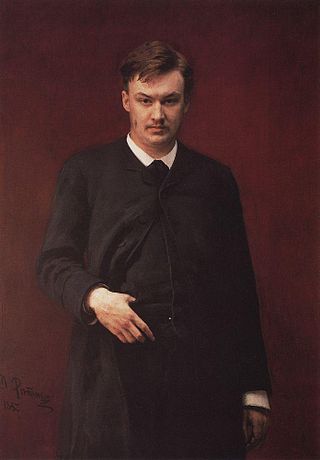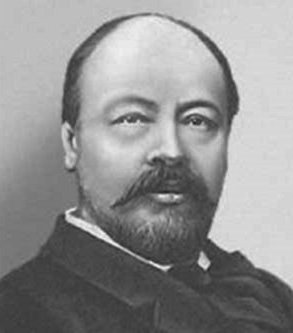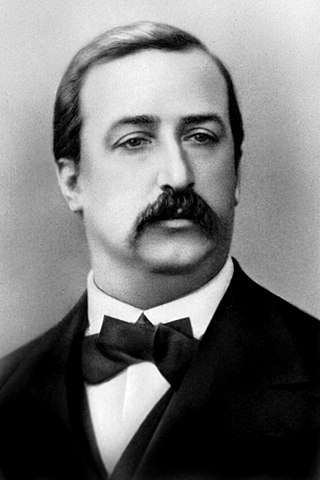Related Research Articles

Igor Fyodorovich Stravinsky was a Russian composer and conductor with French citizenship and United States citizenship. He is widely considered one of the most important and influential composers of the 20th century and a pivotal figure in modernist music.

Nikolai Andreyevich Rimsky-Korsakov was a Russian composer, a member of the group of composers known as The Five. He was a master of orchestration. His best-known orchestral compositions—Capriccio Espagnol, the Russian Easter Festival Overture, and the symphonic suite Scheherazade—are staples of the classical music repertoire, along with suites and excerpts from some of his 15 operas. Scheherazade is an example of his frequent use of fairy-tale and folk subjects.

Mily Alexeyevich Balakirev was a Russian composer, pianist, and conductor known today primarily for his work promoting musical nationalism and his encouragement of more famous Russian composers, notably Pyotr Ilyich Tchaikovsky. He began his career as a pivotal figure, extending the fusion of traditional folk music and experimental classical music practices begun by composer Mikhail Glinka. In the process, Balakirev developed musical patterns that could express overt nationalistic feeling. After a nervous breakdown and consequent sabbatical, he returned to classical music but did not wield the same level of influence as before.

Alexander Konstantinovich Glazunov was a Russian composer, music teacher, and conductor of the late Russian Romantic period. He was director of the Saint Petersburg Conservatory between 1905 and 1928 and was instrumental in the reorganization of the institute into the Petrograd Conservatory, then the Leningrad Conservatory, following the Bolshevik Revolution. He continued as head of the Conservatory until 1930, though he had left the Soviet Union in 1928 and did not return. The best-known student under his tenure during the early Soviet years was Dmitri Shostakovich.

The Symphony No. 6 in B minor, Op. 74, also known as the Pathétique Symphony, is Pyotr Ilyich Tchaikovsky's final completed symphony, written between February and the end of August 1893. The composer entitled the work "The Passionate Symphony", employing a Russian word, Патетическая (Pateticheskaya), meaning "passionate" or "emotional", which was then translated into French as pathétique, meaning "solemn" or "emotive".

Anatoly Konstantinovich Lyadov was a Russian composer, teacher and conductor.

Nikolai Karlovich Medtner was a Russian composer and virtuoso pianist. After a period of comparative obscurity in the 25 years immediately after his death, he is now becoming recognized as one of the most significant Russian composers for the piano.

Alexander Tikhonovich Gretchaninov was a Russian Romantic composer.

Antar is a composition for symphony orchestra in four movements by the Russian composer Nikolai Rimsky-Korsakov. He wrote the piece in 1868 but revised it in 1875 and 1891. He initially called the work his Symphony No. 2. He later reconsidered and called it a symphonic suite. It was first performed in March 1869 at a concert of the Russian Musical Society.

Nikolai Rimsky-Korsakov composed his Symphony No. 1 in E minor, Op. 1, between 1861 and 1865 under the guidance of Mily Balakirev. Balakirev also premiered the work at a concert of the Free Music School in December 1865. Rimsky-Korsakov revised the work in 1884.

Symphony No. 2 in B minor by Alexander Borodin was composed intermittently between 1869 and 1876. It consists of four movements and is considered the most important large-scale work completed by the composer himself. It has many melodic resemblances to both Prince Igor and Mlada, two theatre works that diverted Borodin's attention on and off during the six years of composition.
Alexander Glazunov composed his Symphony No. 3 in D major, Op. 33, in 1890, and it was published by 1892 by the Leipzig firm owned by Mitrofan Belyayev. The symphony is dedicated to Pyotr Ilyich Tchaikovsky and was first performed in St. Petersburg in December 1890 under the baton of Anatoly Lyadov. The symphony is considered a transitional work, with Glazunov largely eschewing the influences of Balakirev, Borodin, and Rimsky-Korsakov inherent in his earlier symphonies for the newer influences of Tchaikovsky and Wagner. Because of this change, the Third has been called the "anti-kuchkist" symphony in Glazunov's output. He would tone down these new influences in his subsequent symphonies as he strove for an eclectic mature style. The Third also shows a greater depth of expression, most evident in the chromatic turns of its third movement, reminiscent of Wagner's opera Tristan und Isolde.
The Symphony No. 1 in C minor, Op. 3, by Nikolai Myaskovsky was written in 1908.
The Grand Piano Sonata in G major, Op. 37, was written by Russian composer Pyotr Ilyich Tchaikovsky in 1878. Though initially received with critical acclaim, the sonata has struggled to maintain a solid position in the modern repertoire. Nevertheless, the sonata has been recorded numerous times and is recognized as one of the composer's masterworks. It is dedicated to Karl Klindworth.
The Quatre études, Op. 7 are a collection of short études for piano by Igor Stravinsky. They were composed between June and July 1908 in Ustilug, Russian Empire. Along with his Piano Sonata in F-sharp minor, the études are one of his major early works for piano.
Scherzo fantastique, op. 3, composed in 1908, is the second purely orchestral work by Igor Stravinsky. Despite the composer's later description of the work as "a piece of 'pure', symphonic music", the work was inspired by Maurice Maeterlinck's 1901 essay "La Vie des Abeilles", as is made clear in a letter of 18 June 1907 from the composer to his teacher Rimsky-Korsakov. Ten years later, Léo Staats adapted it as a ballet for the Opéra Garnier, with the title Les Abeilles, which was objected to by Maeterlinck.
Sonatas, duos and fantasies by Franz Schubert include all works for solo piano by Franz Schubert, except separate dances. They also include a number of works for two players: piano four hands, or piano and a string instrument.

Scherzo, sometimes also referred to as Scherzo in G minor, is one of Igor Stravinsky's earliest works for piano. It was composed in 1902.
Scherzo in F-sharp minor is a piece for orchestra written by Dmitri Shostakovich (1906–1975). Shostakovich was a Russian composer and pianist during the Soviet era. It was most likely written in 1921 or 1922 while Shostakovich was studying at the Petrograd Conservatory under Maximilian Steinberg. The composition is one of the composer's earliest surviving works. Originally written as a single movement of a piano sonata, the Scherzo was later orchestrated with assistance from Steinberg and became an orchestral work in its own right.
References
- ↑ Igor Stravinsky (1974), Eric Walter White (ed.), Sonata in F-sharp minor (1903–4) for piano, London: Faber Music, p. 2